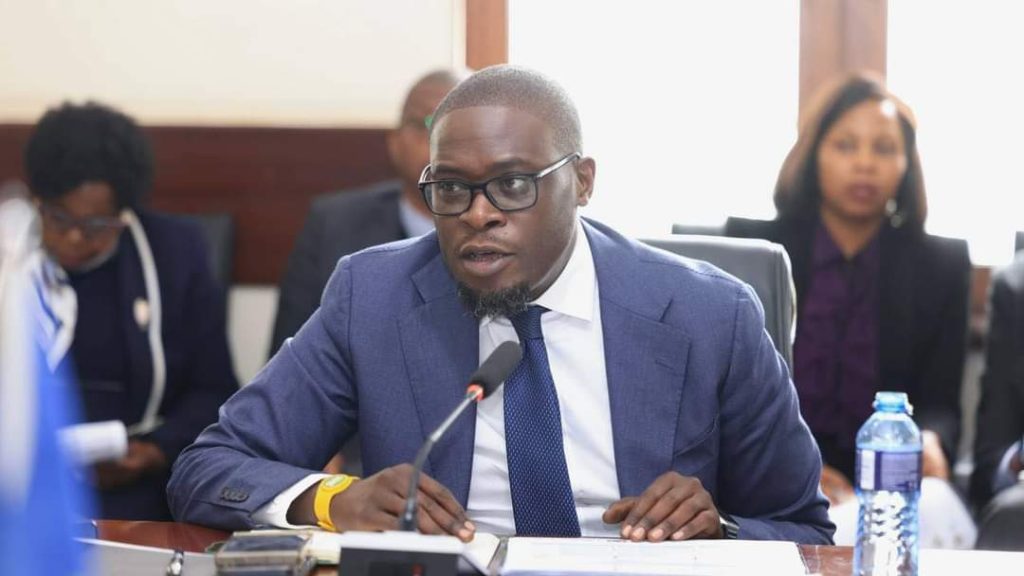Nairobi Governor Johnson Sakaja has assured residents that major improvements are coming to the city’s road and drainage system once the rainy season subsides.
Speaking on a local TV station on Wednesday, April 23, 2025, the Governor acknowledged the longstanding complaints about the city’s poor drainage, which has led to constant flooding during rains. He said Nairobians should expect a visible change starting mid-June 2025.
“In a few months, let the rains subside in mid-June, and you will see a big change. I can promise Nairobians,” Sakaja said.
Adding;
“There is no Governor in this country who does not want all his roads fixed. Why? We also drive on the roads, we live in the cities, and we know the impact of doing so. We want it done, but let’s have the right proper governance structure and financing in the right place.”
Sakaja explained that Nairobi’s outdated drainage system cannot handle the amount of rain the city receives today. Most of the drains were designed during colonial times and were built for a smaller city with far fewer people and less infrastructure.
As the city has grown, more land has been covered with buildings and roads, which increases water runoff and worsens flooding.
“The amount of rain that is coming down is higher than ever before. A lot of our drains were designed for a smaller capacity of seasonal rain in the city,” he explained.
The Governor also addressed criticism over flooding on key roads like Mombasa Road and Uhuru Highway. He clarified that these are national roads and fall under the responsibility of the national government, not the county.
“I did not shut my responsibility, I heard complaints about Mombasa Road, Uhuru Highway, that is an international road, it is not under my purview,” he said.
Sakaja highlighted efforts by the county to deal with clogged drains and flooding. He said over 3,800 youth have been hired to collect garbage and clear drainage blockages. However, he admitted that more needs to be done and that some issues stem from poor coordination between national and county agencies.
He gave the example of Ojijo Road and Kipande Road in Parklands, which used to flood frequently. He said that after inspecting the area himself, he discovered a mismatch in the drainage systems. The larger 1.2-meter drainage pipe built by the Kenya National Highways Authority (KeNHA) connects to a much smaller 0.6-meter pipe on Ojijo Road, causing a blockage.
“Science would tell you that there will be a backlog. I implored KeNHA, Why don’t you add another 0.6m on Kipande Road, and that is why it does not flood?”
He argued that many of the roads the county is trying to fix are technically under the jurisdiction of national bodies like the Kenya Urban Roads Authority (KURA) and Kenya Rural Roads Authority (KERRA), yet counties still bear the brunt of public blame.

He also echoed sentiments recently shared by former Prime Minister Raila Odinga, who questioned why national agencies are in charge of roads in the Nairobi Central Business District (CBD), saying such responsibilities should be handled by counties.
“You had the former Prime Minister Raila Odinga talk about the Road Maintenance Levy Fund. The resources to sort these things out are still being held by the national government. There are more county roads than national roads. There are 65% of county roads, but still, resources go to national roads,” Sakaja lamented
Sakaja also said the matter of road management between the national and county governments is currently in court.
Long-standing drainage issue
Nairobi’s long-standing flooding problem is a result of several factors: rapid urban growth, poor city planning, blocked drains caused by illegal dumping of waste, and unchecked construction on wetlands and riverbanks. Many developers ignore drainage rules, and open drains are often used as dumping sites for garbage, blocking the flow of water.
In many cases, buildings have been put up too close to rivers and natural wetlands. These areas once absorbed rainwater and prevented flooding, but they have now been replaced by concrete and tarmac, which only increases the volume of stormwater runoff.